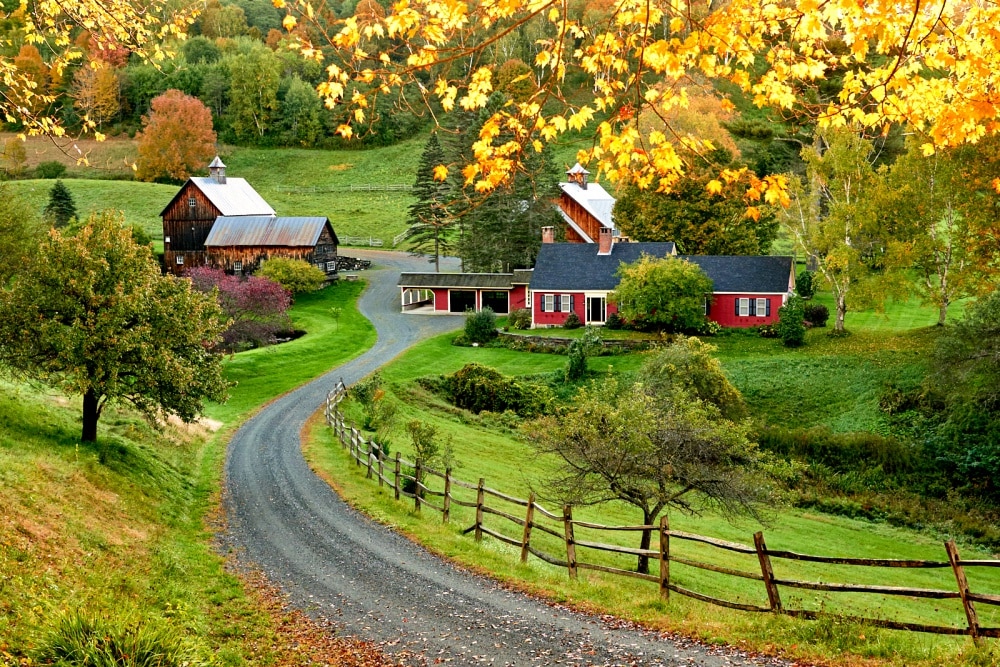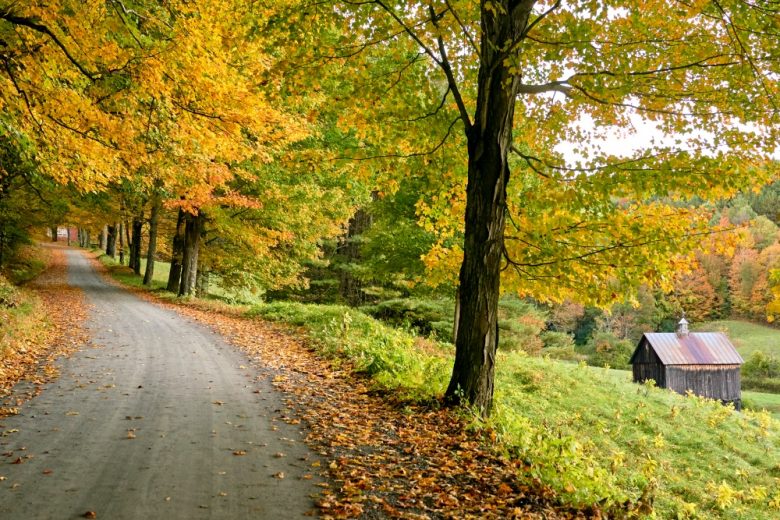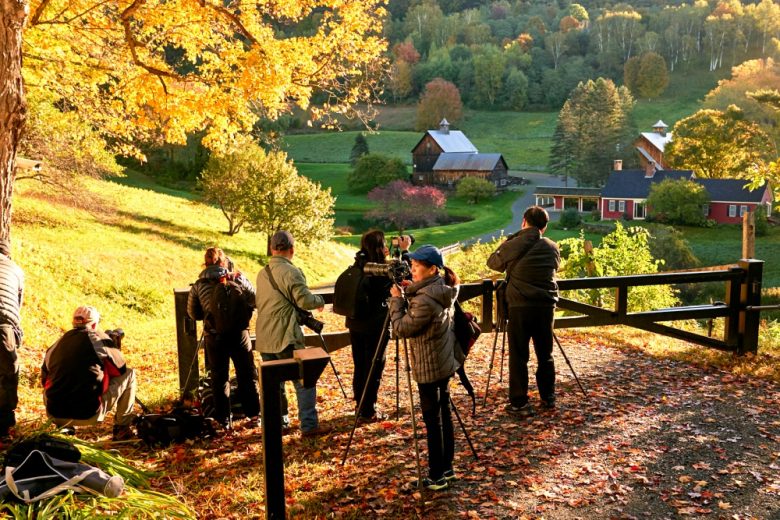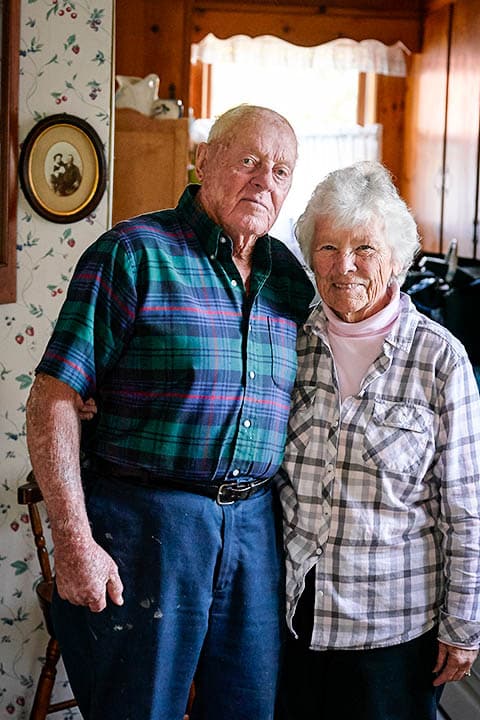The History of Sleepy Hollow Farm | How a Humble Vermont Homestead Became an Instagram Icon
It’s one of the most photographed properties in Vermont — but it didn’t start out that way. Learn the history of Pomfret’s Sleepy Hollow Farm.

Sleepy Hollow Farm in Pomfret, Vermont.
Photo Credit : Mark Fleming2023 Update. In response to an unprecedented number of visitors in recent years, all vying for the same shot, the town of Pomfret will be closing non-resident road access to Sleepy Hollow Farm and its neighbors from September 23 – October 15. Please enjoy the many existing photos of the property, and direct your efforts instead to the many wonderful foliage sights and activities in and around the Woodstock area. You can read about the road closures here.
In the fall of 2018, I took a weeklong foliage trip across northern New England for Yankee. The goal was both simple and complicated: to pack in as many autumn-related experiences as possible. One of the bucket-list destinations was Sleepy Hollow Farm in Pomfret, Vermont.
If you have even a passing interest in New England fall photos, you’ve no doubt already seen pictures of the property. Located just outside the all-things-autumn town of Woodstock, Sleepy Hollow sits off Cloudland Road, a winding dirt road lined by stately maples and restored farmhouses. With its big barns, late-1700s Cape farmhouse, and knack for catching the light just right, Sleepy Hollow is catnip for photographers. In the morning or early evening, the narrow road to the farm might be lined with as many as 20 cars, as shutterbugs hunker down with their tripods.

Photo Credit : Mark Fleming
During my visit, I arrived just before 6 a.m. It was still dark, and I figured I’d be the first visitor. I was such a naive foliage tourist. Lin Go, a biologist from China who had been living in Boston during the past year, was already walking the road to study the setting, waiting for first light. He had left Boston at 3 in the morning to see the farm at sunrise.
“There is nothing like this in China,” he said. “The colors. I had to get these pictures before I head home.”
Soon, others came. A man from Pennsylvania who got ribbed for wearing an Orioles jacket in Red Sox country. A group of Vietnamese photographers from southern California. A young father who’d driven from Los Angeles with his wife and their three children, including a 3-month-old.
“I saw a photo of the farm while we were at Niagara Falls, and I told my wife I had to photograph it,” he explained.
At one time as many as 25 people crowded around the top of Sleepy Hollow’s drive to photograph the landscape.

Photo Credit : Mark Fleming
It wasn’t always this way, of course.
The History of Vermont’s Sleepy Hollow Farm
The story of Sleepy Hollow Farm goes back to the late 1780s, when two young brothers from Connecticut, Samuel and John Doten, left the family farm for a new life in central Vermont.
They were not pioneers in that regard. The area that would come to be known as Pomfret, Vermont, was chartered in 1761, and nine years later Bartholomew Durkee, a native of Pomfret, Connecticut, became its first settler. Over the next few years, others from Durkee’s hometown followed him, including the Doten brothers. Not surprisingly, they called their new home New Pomfret; it was later shortened to Pomfret.
When the Doten brothers arrived in Vermont, they built neighboring farms. Samuel constructed a farmhouse on a rise of land, with views of the nearby hills and the growing town of Woodstock. John built his place on a stretch of land that sat just below the road and his brother’s home.
Over the next century and a half, both Doten farms remained in the family. There was little demarcation between the two properties. The lands were connected by pastures, and Dotens played and worked together.
“When it was time to hay, we’d head over to our cousins’ place and help load up the wagons and fill the silos,” recalls Fred Doten, Samuel’s great-great-great grandson, who resides in the same house and works the same land that generations before him did.

Photo Credit : Mark Fleming
His older cousin, Edward, and his wife, Elsie, owned the farm that John Doten had built. They had a milking herd and a large flock of chickens. Doten eggs were delivered to homes around Woodstock and Pomfret.
But in the 1950s, Edward and Elsie, both well into middle age, decided to leave farming. Maybe they were just tired of the work, says Fred, or perhaps they sensed that small farms like theirs were on borrowed time: Several decades ago eight small working farms lined Cloudland Road, but today only two remain.
Edward and Elsie moved on to work for Laurance Rockefeller, the famous philanthropist and conservationist who had deep ties to Woodstock. Edward took care of the grounds of the Rockefeller home, while his wife managed the house.
And their former farm — which would come to be known as Sleepy Hollow — passed through the hands of a few different owners over the next few decades.
Who Owns Sleepy Hollow Farm Today?
The current owner of the farm purchased it for 2.2 million in 2020 from Aerosmith guitarist Joe Perry and his wife, Billie, who made Sleepy Hollow their Vermont retreat. The property consists of 115 acres and includes the original Cape and a heated six-stall barn with loft/studio that’s connected to the house, as well as a pond, a guest house and a log cabin that rests on a ridge with fantastic views of the surrounding hills. In 2015 Perry put the place on the market for $3.1 million before changing his mind and deciding to keep it.
Fred Doten says that it’s only been in the past 10 to 15 years that Sleepy Hollow has become such a magnet for photographers. The advent of mobile photography and the rise of Instagram have certainly played a part in its popularity. But for many people looking to shoot a classic Vermont scene, it also checks a lot of boxes.
“There’s the ease of access,” says Yankee’s foliage expert, Jim Salge. “You can shoot it from the road. It has this long, sweeping driveway that winds down to the property, giving you a perfect angle from above, of the barns and house. You’ve also got the ponds, which in the morning has mist coming off them and the hills behind it. In every possible way it’s perfect. It’s what you think of when you think of Vermont. Plus, you’re surrounded by all this all other stuff: downtown Woodstock, Quechee village, Billings Farm & Museum. So you’ve got this place that looks like classic Vermont in this remote rural scene that’s actually surrounded by all this other great stuff to shoot.”

Photo Credit : Mark Fleming
Fred Doten, however, chuckles a little bit at the mystique surrounding Sleepy Hollow. “You can’t believe how many photographers visit,” he says. “And it’s year-round, not just in the fall.”
He laughs and adds, “But I can’t say the views are all that good. You can see a lot more of the area from our place.”
That’s not to suggest he wants his farm to gain the kind of notoriety that Sleepy Hollow has, though he admits: “We like it when they stop at our farm stand to buy our maple syrup.”
This post was first published in 2019 and has been updated.
Ian Aldrich
Ian Aldrich is the Senior Features Editor at Yankee magazine, where he has worked for more for nearly two decades. As the magazine’s staff feature writer, he writes stories that delve deep into issues facing communities throughout New England. In 2019 he received gold in the reporting category at the annual City-Regional Magazine conference for his story on New England’s opioid crisis. Ian’s work has been recognized by both the Best American Sports and Best American Travel Writing anthologies. He lives with his family in Dublin, New Hampshire.
More by Ian Aldrich

